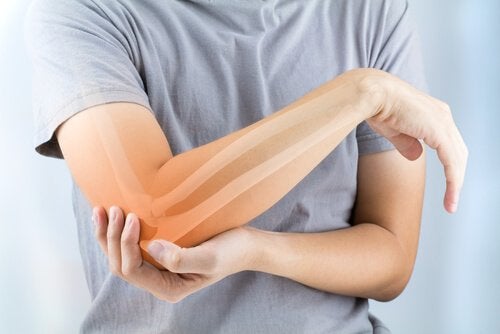Rheumatoid arthritis is estimated to affect between 0. 5% and 0. 8% of the world’s population, although many people are undiagnosed.
This disorder mainly affects women between the age of 30 and 50, and significantly decreases the quality of life of patients by reducing joint mobility and making any movement painful.
- The term is a composition of words of Greek origin and means “inflammation of the joint” because it is the main manifestation of the disease.
- Although it can occur in much of the body.
- This inflammation is more common in the joints and is often accompanied by muscle pain and fever.
Arthritis is, as we have seen, inflammation of the joints; The term “rheumatoid” is a non-specific term that refers to similar pain in joints, bones, cartilage, muscles, ligaments, tendons, and connective tissue. Not to be confused with the term “osteoarthritis”, which refers to bones.
Rheumatoid arthritis has no known origin. His clinical picture has been found in texts for centuries, but a clear cause has not yet been identified. Immune system involvement is known, so it is considered an autoimmune disease, and certain risk factors may be taken into account.
It is a degenerative disease, which means that their symptoms inevitably worsen over time, and nothing can be done but palliative care, the patient’s joints deform painfully until they adopt uncomfortable postures that cannot be undone, inevitably people affected by the disease have autonomy. reduced and cannot develop his life normally.
The main risk factors for arthritis are genetic: about 60% of cases have genetic factors. This means that if we have a family member, especially first-degree relatives, who have the disease, there is a chance that we will also have it in the future.
Another risk factor mentioned above is the sex of the patient; women are two or three times more likely to develop the disease; it is believed that this propensity is due to the presence of more estrogen, which stimulates the immune system; Testosterone is another disease-related hormone: men with low testosterone levels are more likely to suffer from rheumatoid arthritis.
Because it is an autoimmune disease, RA has a preference for joints. During the first stage of the disease, symptoms can only be seen in the blood, where higher-than-usual antibody production develops.
It is in the second stage where the most common symptom appears: inflammation of the joints, which presents the key to the diagnosis of the disease; the second stage is characterized by the growth of synovial structures around the joint; the third stage is characterized by Chronic Inflammation At this stage, the structures surrounding the joint begin to degrade the cartilage and bones.
However, the fact that RA takes precedence over joints does not necessarily mean that it is the only part of the affected body: other areas or systems of the human body may also be affected. Anemia, for example, is a common consequence of RA, such as pleurisy, pulmonary fibrosis, and lung nodules.
Among the most common treatments are anti-inflammatory drugs, which act in areas affected by the disease. Moderate exercise is recommended in the early stages of RA, which helps delay the onset of more severe inflammation.
At other times it is more advisable to rest, accompanied by visits to the physical therapist, other recommendations are: change the diet and leave unhealthy habits, such as smoking or alcohol consumption.
As we have seen above, rheumatoid arthritis has no cure at the moment, so its treatment will always be palliative, that is, the drugs used in the treatment aim to delay the last stages of the disease and cause the patient to develop. usually on a day-to-day life, however, as it is a degenerative disease, this goal cannot always be achieved.

